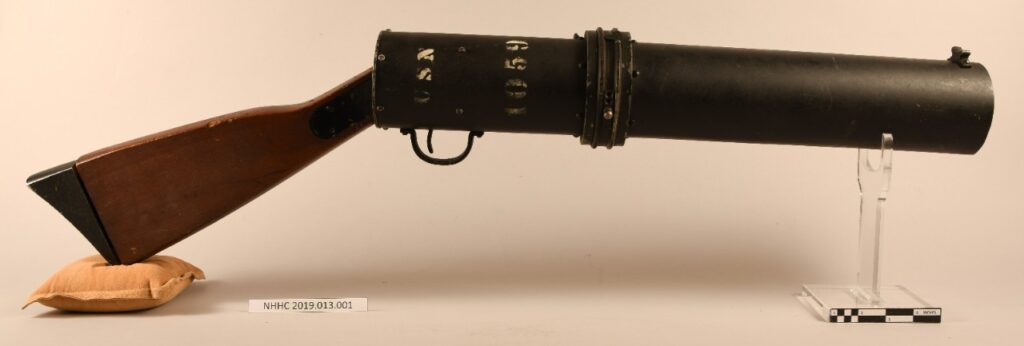1. Pocket Compass, USS Constitution
- Date: Early 1800’s
- Description: Small pocket compass in copper with decorated card.
- Accession # NHHC 2014.058.001
- Location: Headquarters Artifact Collection, Naval History & Heritage command
- Caption. This compass was used by Lt. Nathaniel Haraden while on board the USS Constitution in the early 1800’s. This compass is a more handheld version than that of the ship’s compass and allows personal usage by sailors. This one had a compass rose marked with eight points. (Cardinal or ordinal only) The north mark has a decorated (fleur-de-lis) drawn on to mark its significance as the MAIN cardinal direction.
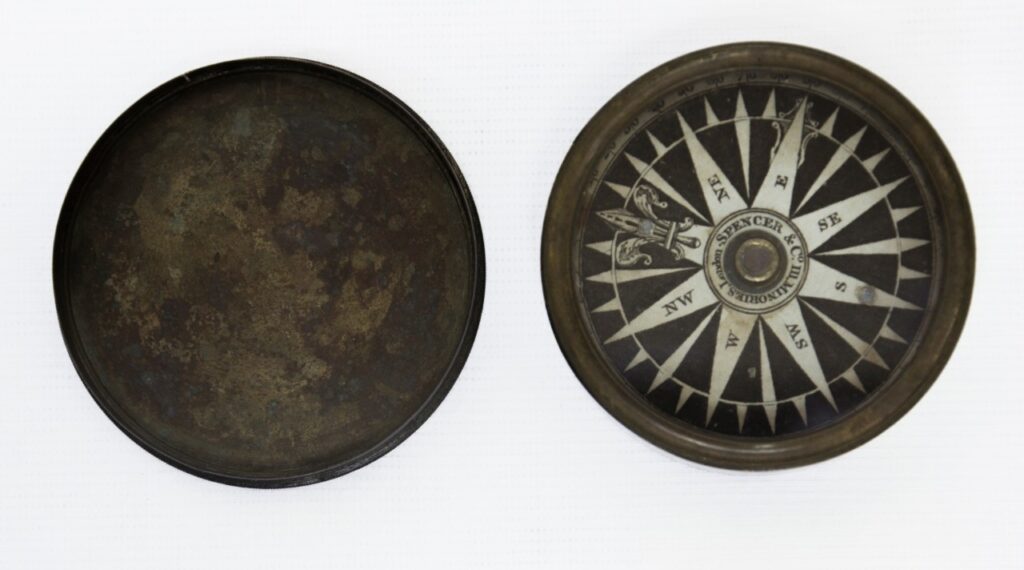
2. Directional Transit Theodolite
- Date: c. 1840s
- Description: Brass dials, knobs, and spyglass placed on multiple circular plates.
- Accession: NHHC 1967-415-AB
- Location: Headquarters Artifact Collection, Naval Historic & Heritage Command
- Caption: A transit theodolite is a navigational device used to measure both angles and distance as well as determining elevation. The dials and knobs are possibly used to hold the Theodolite in place on a part of a ship, such as the railing or the hull. This could allow the spyglass to remain steady as the navigator measures the angles. On the plate, it is engraved with the creators’ names, determining the date and place this device was built, “E. & G. W. Blunt / New York / Improved by Richard Patten & Son, Washington City.”
Source: https://www.history.navy.mil/our-collections/artifacts/Navigation/theodolite–circa-1845.html
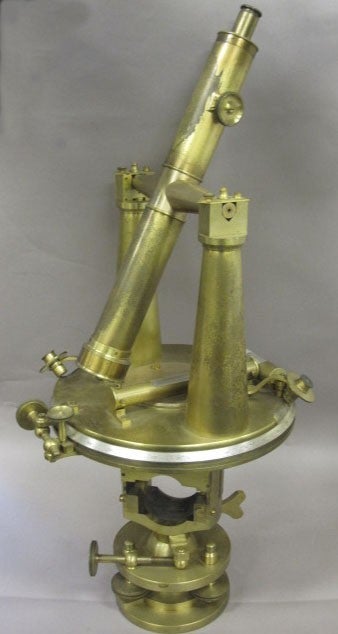
3. John Sewill Sextant
- Date: 1871
- Description: Copper alloy wedge-shaped frame with Brass arc. placed in wooden box
- Accession #: NHHC 1967-415-AA
- Location: Headquarters Artifact Collection, Naval History & Heritage Command.
- Caption: The sextant is one of the core navigation tools used from the 18th & 19th century. They are used to determine the angle of a celestial object and the horizon (arc). It has a telescope mounted on the frame and a series of mirrors to reflect light to accurately measure the angle. The angle and time the measurement was taken can be then implemented to determine a ship’s latitude and longitude. This was made by John Sewill from London for the US Navy, showing the closeness and benefits from the relationship between US and English navies.
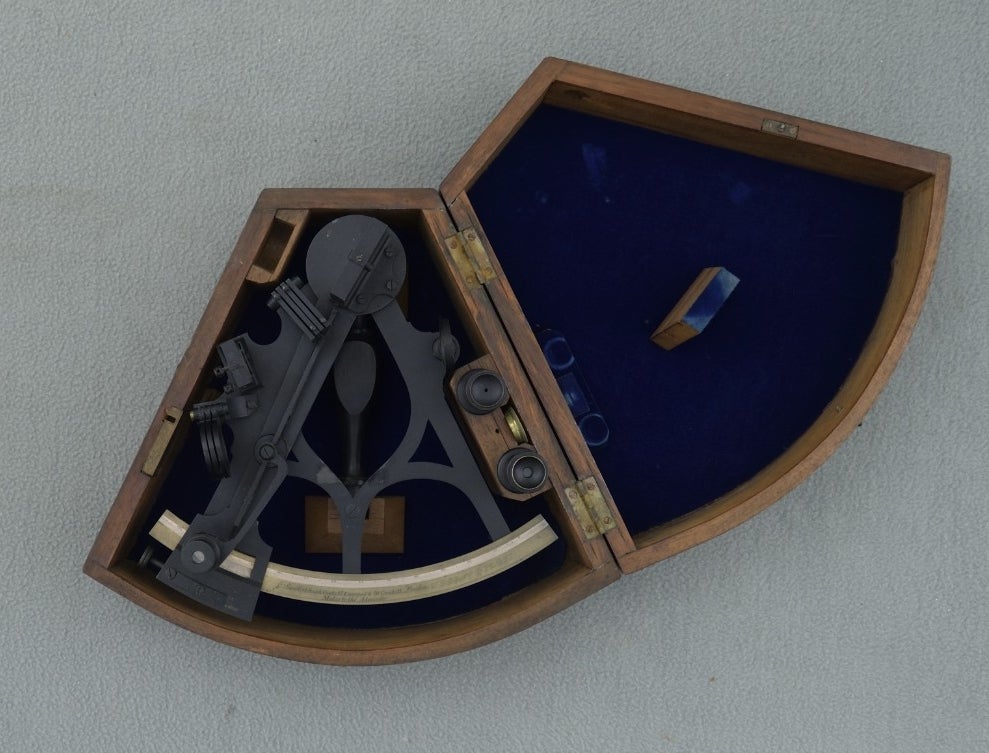
4. Bechler’s Navigator
- Date: 1898
- Description: Spherical astrolabe made of wood, felt, and metal
- Accession #: NHHC-1967-415-R
- Location: Headquarters Artifact Collections, Naval History and Heritage Command
- Caption: This astrolabe, also known as a mechanical navigator, helps sailing navigators by measuring the location of celestial bodies relative to the ship, like other astrolabes. Yet due to its complicated nature, it was only used to teach navigation. In its place, sailors used Mariners’ astrolabes, a much more simplified version, to navigate the ocean. Astrolabes measure can easily measure the latitude of a ship’s position, while longitudinal measurements were more difficult until the introduction of lunar distance calculations.
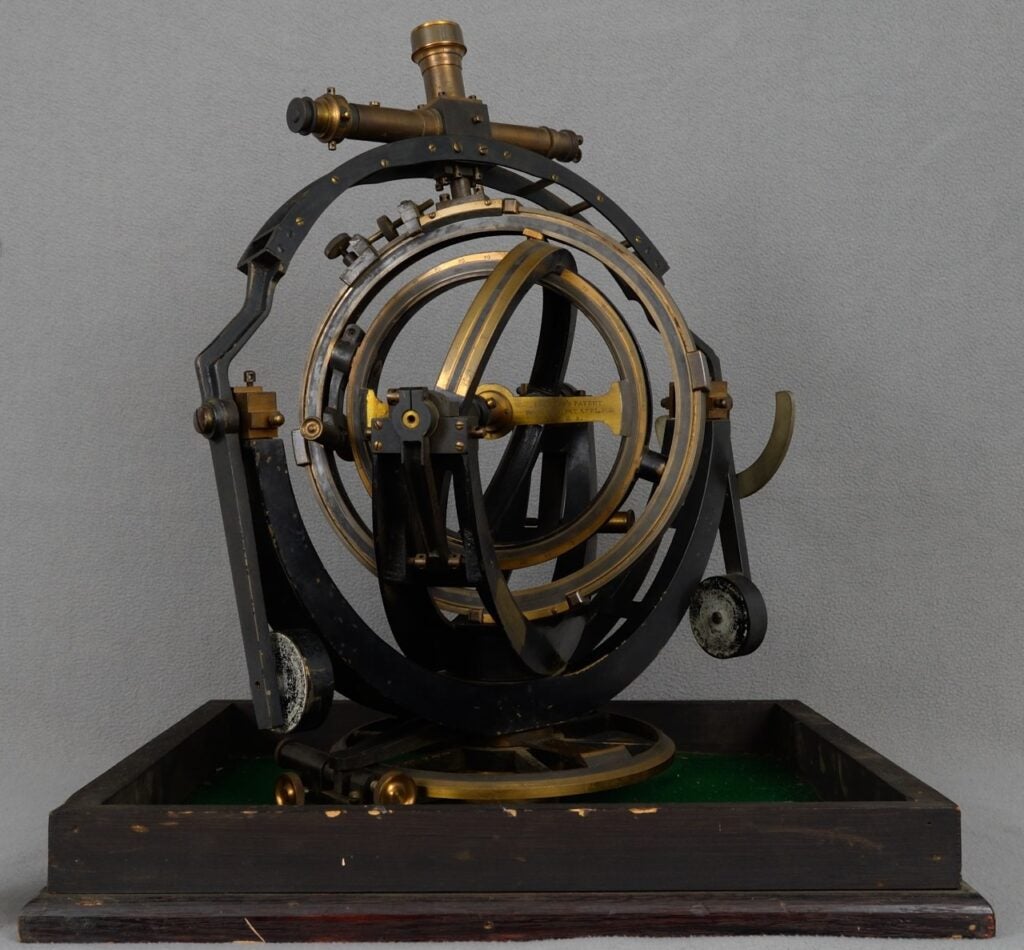
5. Blinker Tube
- Date: c.1945
- Description: Gun-style flashlight, wooden stock and metal tube
- Accession: NHHC 2019.013.001
- Location: Headquarters Artifacts Collection, Naval History & Heritage Command
- Caption: The blinker tube is a gun type signal light, used for nighttime communication between ships during World War II, similar to ship searchlights. This portable version provided a shoulder mount with the gunstock, allowing for easier aiming. It offers a subtle light when the trigger is pulled, which is harder to notice than the ship searchlight. The tube allows the beam to be directly focused on the target and can conceal the beam and the ships. These were used when radio silence was needed to prevent the interception of messages by enemies.
